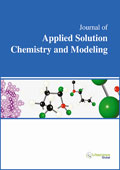jascm
Editor's Choice : Synthesis of Stable Sols of Layered Titanate Nanoparticles using Dialysis and Applications for Thin Film Preparation
|
|
Abstract: Sols with stable dispersion of layered titanate nanoparticles were prepared at 298 K using dialysis of a mixed solution of ethylene glycol, TiCl3, ammonium carbonate, and H2O2. Raman spectra of the particles in the obtained sols showed Raman scattering peaks which can be assigned to a layered titanate structure. The stability of the obtained sols depended on the molar ratio of [ammonium carbonate] / [Ti ion]. The molar ratios of 3, 4, and 5 produced transparent yellow stable sols. Peptization of titanium hydroxide precipitate with H2O2 formed stable sols with dispersion of layered titanate nanoparticles, which had plate - shaped morphology. The obtained sols formed layered titanate thin films on glass substrates easily by drying the sols. Furthermore, when the layered titanate thin films were heated at 773 K for 1 h, anatase TiO2 thin films were obtained with (101) orientation of crystallites and optical transparency. Keywords: Nanostructures, Oxides, Thin films, Sol-gel, Peptization, Coatings.Download Full Article |
Editor's Choice : Determination of pKa Values for Acrylic, Methacrylic and Itaconic Acids by 1H and 13C NMR in Deuterated Water
|
|
Abstract: Acrylic, methacrylic and itaconic acids have Brønsted acidity given by carboxylic groups, and they are extensively used in polymerization for modification of several soft-mater materials. By this reason it is important to propose better characterization studies and alternatives to obtain more of their physicochemical properties. In this work the pKa values of these acids are obtained by adjusting NMR chemical shifts for hydrogen and carbon nuclei as a function of pH with program HYPNMR, and compared with those obtained by potentiometric and conductometric titrations. Keywords: pKa values, acrylic acid derivatives, HYPNMR, 1H NMR, 13C NMR.Download Full Article |
Editor's Choice : The Interrelationship between Thermodynamics and Energetics: The True Sense of Equilibrium Thermodynamics
|
|
Abstract: The interrelationship between the conventional thermodynamics and energetics has been discussed in detail. A number of flavors has been considered in the field of energetics, with the conclusion that the actual difference among all of them is rather superficial. A need to reconsider the foundations of thermodynamics and statistical physics has been pointed out. Such a re-consideration ought to facilitate formulating thermodynamics at any level of matter organization: from the microscopic through nano- and mesoscopic to the macroscopic one. Keywords: Thermodynamics, Energetics, Enthalpy, Entropy, Statistical Mechanics.Download Full Article |
Editor's Choice : The Radical-Chain Addition to Double Molecular Bonds by the Nonbranched-Chain Mechanism: Low-Reactive Free Radicals Shortening Kinetic Chains
|
|
Abstract: Five reaction schemes are suggested for the initiated nonbranched-chain addition of free radicals to the multiple bonds of the unsaturated compounds. The proposed schemes include the reaction competing with chain propagation reactions through a reactive free radical. The chain evolution stage in these schemes involves three or four types of free radicals. One of them is relatively low-reactive and inhibits the chain process by shortening of the kinetic chain length. Based on the suggested schemes, nine rate equations (containing one to three parameters to be determined directly) are deduced using quasi-steady-state treatment. These equations provide good fits for the nonmonotonic (peaking) dependences of the formation rates of the molecular products (1:1 adducts) on the concentration of the unsaturated component in binary systems consisting of a saturated component (hydrocarbon, alcohol, etc.) and an unsaturated component (olefin, allyl alcohol, formaldehyde, or dioxygen). The unsaturated compound in these systems is both a reactant and an autoinhibitor generating low-reactive free radicals. A similar kinetic description is applicable to the nonbranched-chain process of the free-radical hydrogen oxidation, in which the oxygen with the increase of its concentration begins to act as an oxidation autoingibitor (or an antioxidant). The energetics of the key radical-molecule reactions is considered. Keywords: Binary System, Unsaturated Compound, Low-Reactive Radical, Autoinhibitor, Competing Reaction, Non-Branched-Chain Addition, Kinetic Equation, Rate, Parameters, Thermochemical Data, Energy.Download Full Article |






















